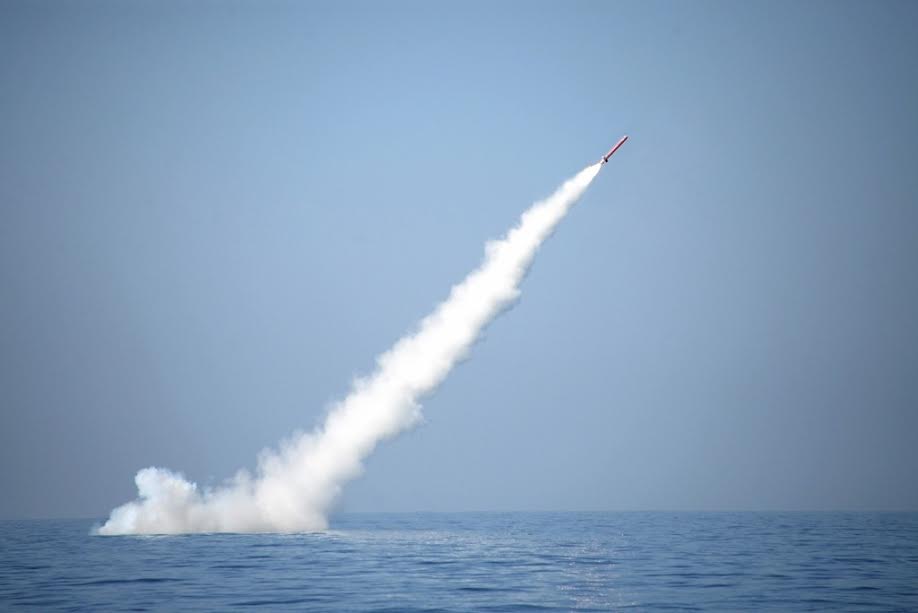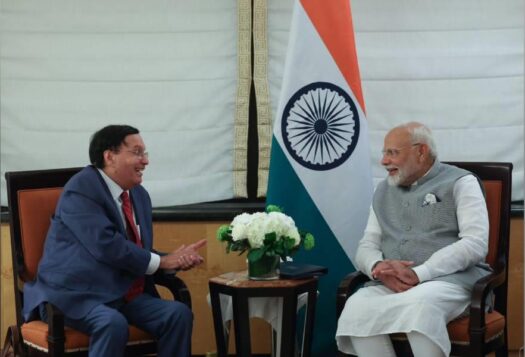
On March 29, Pakistan’s Inter-Services Public Relations (ISPR) confirmed in a press release that Pakistan had conducted another test of the Babur-3 nuclear-capable submarine-launched cruise missile (SLCM), after the first test in January last year. The missile, with a range of 450 km, engaged its target with “precise accuracy” and was successful in “meeting all the flight parameters.” While the yield of the Babur-3 warhead is unknown, analysts estimate from the 47 seconds of flight-testing footage shared by Pakistan’s defense establishment that the SLCM was fired underwater horizontally from torpedo tubes. This test indicates Pakistan’s nuclear planners’ motivation to possess a credible second-strike capability, thereby “augmenting the existing deterrence regime.” Pakistan is seeking a second-strike capability to buttress its policy of full spectrum deterrence. However, it can be argued that the SLCM Babur-3 does not maximize Pakistan’s deterrence. Instead, it fails to reassure Pakistan of credible sea-based deterrence and the readiness of naval nuclear weapons at sea, and ultimately lowers the nuclear threshold in South Asia, thus making the security situation in the region more precarious.
Pervaiz Asghar, retired Rear Admiral of the Pakistan Navy, has argued that for Pakistan to have a credible second-strike capability, their submarines need to be nuclear-powered and “able to carry a sufficient ballistic missile load.” Pakistan does not yet operate nuclear submarines but has plans to integrate the Babur-3 missiles with the Pakistan Navy’s Agosta 90B diesel-electric submarines.
This is destabilizing for three reasons:
First, this idea of commingling conventional and nuclear assets—placing nuclear-tipped missiles on conventional boats—is inherently destabilizing. The blurring of lines between conventional and nuclear forces injects ambiguity that raises the chances of miscalculation at sea. Though Pakistan prefers ambiguity to enhance its deterrence, this emphasis on commingling of assets will pose challenges of target determination and attribution for its adversary. For instance, in a crisis situation, Pakistan’s adversary may tail a conventional submarine, unaware that the sub is carrying strategic weapons, and such tailing might inadvertently lead to escalation. In addition, commingling would lead to the perception that every Pakistani sub, even if it is not carrying strategic weapons and only conducting surveillance and intelligence gathering, is antagonist and a potential nuclear threat. Such misperceptions may lead to unintended consequences. In Murky Waters: Naval Nuclear Dynamics in the Indian Ocean, Iskander Rehman writes that “in times of conflict [during the Cold War], Soviet and Western naval commanders would have no way of determining whether enemy vessels were armed with nuclear weapons or not.” Indeed, it took many years for Cold War defense planners to learn the lessons and fully comprehend the risks of uncontrollable escalation at sea. Therefore, in 1972, both the United States and the Soviet Union took steps to prevent accidents at sea by signing the Agreement on the Prevention of Incidents On and Over the High Seas. The lack of naval nuclear confidence-building measures between India and Pakistan is a point of concern and it would bode well for the security and stability of the region if they opened channels of communication.
Second, countries pursue second-strike capability to ensure an assured ability to respond and retaliate to a nuclear attack. Modern stealth technology enables submarines to patrol the oceans without being detected by enemies. But there is a stark difference in the operational capacity of nuclear-powered submarines and diesel-powered ones. Nuclear-powered subs can stay submerged for longer periods of time, which enhances their stealth, and they make less noise than diesel-powered subs, making their detection challenging. Additionally, nuclear-powered submarines that carry SLBMs are equipped with more sophisticated technologies given their strategic mission. Conventional subs, the Agosta 90B diesel electric submarines in Pakistan’s case, would be vulnerable to detection, since they operate in noisy, air-consuming engines and can remain underwater for only a few days and need to resurface. And even though Pakistan’s Agosta 90B benefits from an air-independent propulsion system (AIP), analyses demonstrate that AIP systems still don’t match the submergence times and performance of nuclear submarines and hence their use is mostly relegated to coastal operations.
These characteristics of diesel submarines will impact the overall stealth of the Agosta 90B, leading Pakistan’s adversary to potentially detect and target their subs. This defeats the purpose of second-strike capability, and limits it to being only a paper tiger. Rear Admiral Asghar has suggested that Pakistan needs at least four nuclear-powered submarines to have a credible deterrent. However, he argues that “this is a tall order, particularly in terms of costs involved, which would be prohibitive, for meeting the essential cycle of research, investment of such a mammoth nature.” It is, therefore, important to understand that having a “second-strike capability” just as a stop-gap measure fails to augment Pakistan’s deterrence. Therefore, without constraining its economy, as Asghar points out, Pakistan should divert these costs to strengthening its existing capabilities by making them less easily detectable.
Pakistan conducted another successful test fire of indigenously developed Submarine Launched Cruise Missile (SLCM) BABUR having a range of 450 KMs. BABUR is capable of delivering various types of payloads. pic.twitter.com/lAEmbHOYg6
— Maj Gen Asif Ghafoor (@OfficialDGISPR) March 29, 2018
Third, several questions have been raised regarding Islamabad’s ability to safely and reliably manage a submarine-based nuclear force given the doubts raised over the robustness of its command, control, and communications systems. As Ankit Panda points out, “Pakistan has not confirmed what sorts of use controls it will use on board its submarines to prevent unauthorized or accidental launches.” In their paper “Safer at Sea? Pakistan’s Sea Based Deterrent and Nuclear Weapons Security,” Christopher Clary and Ankit Panda discuss that Pakistan has maintained physical and procedural constraints to prevent unwanted use of nuclear weapons. However, it would be difficult to maintain these constraints when nuclear weapons are deployed aboard submarines. The authors describe that the “experience of other nuclear states with sea based weapons suggests there will be a powerful temptation to impose fewer constraints governing authorized use so as to reduce the potential incentives for enemy decapitation strikes against Pakistan.” This possible shift from centralized command & control to pre-delegation can prove destabilizing in the South Asian context.
South Asia is increasingly moving away from a recessed state of deterrence, where nuclear warheads are partially disassembled and de-mated with their delivery vehicles. As India and Pakistan deploy nuclear missiles on submarines, nuclear deterrence patrols on submarines require the warheads, missiles, and charges to be mated, ready to fire, and in the submarine’s launch tubes. This will alter the readiness and nuclear force postures of both countries. Given both countries are moving towards nuclear-tipped missiles readiness, the nuclear threshold in the region will be significantly lowered. Scholars note that while India’s land-based missiles are intended to deter Pakistan, New Delhi’s submarine program is aimed at providing credible deterrence against China. Understandably, there is a temptation in Pakistan to play catch-up with India’s military inventory. However, New Delhi’s improvement of the operational capabilities of its ballistic missile submarine (SSBN) force and submarine-launched ballistic missile (SLBM) technology must be seen as a critical enabler of its “No-First Use” policy and retaliation-only doctrine. India’s 2015 maritime security strategy document highlights deterrence as India’s first priority and war fighting as the second.
Deterrence and stability are becoming more complex in South Asia, and as Pakistan considers the future of its sea-based deterrent, the combination of conventional and nuclear weapons at sea may be another potential avenue for instability and accidental escalation.
***
Image: Pakistan Army


